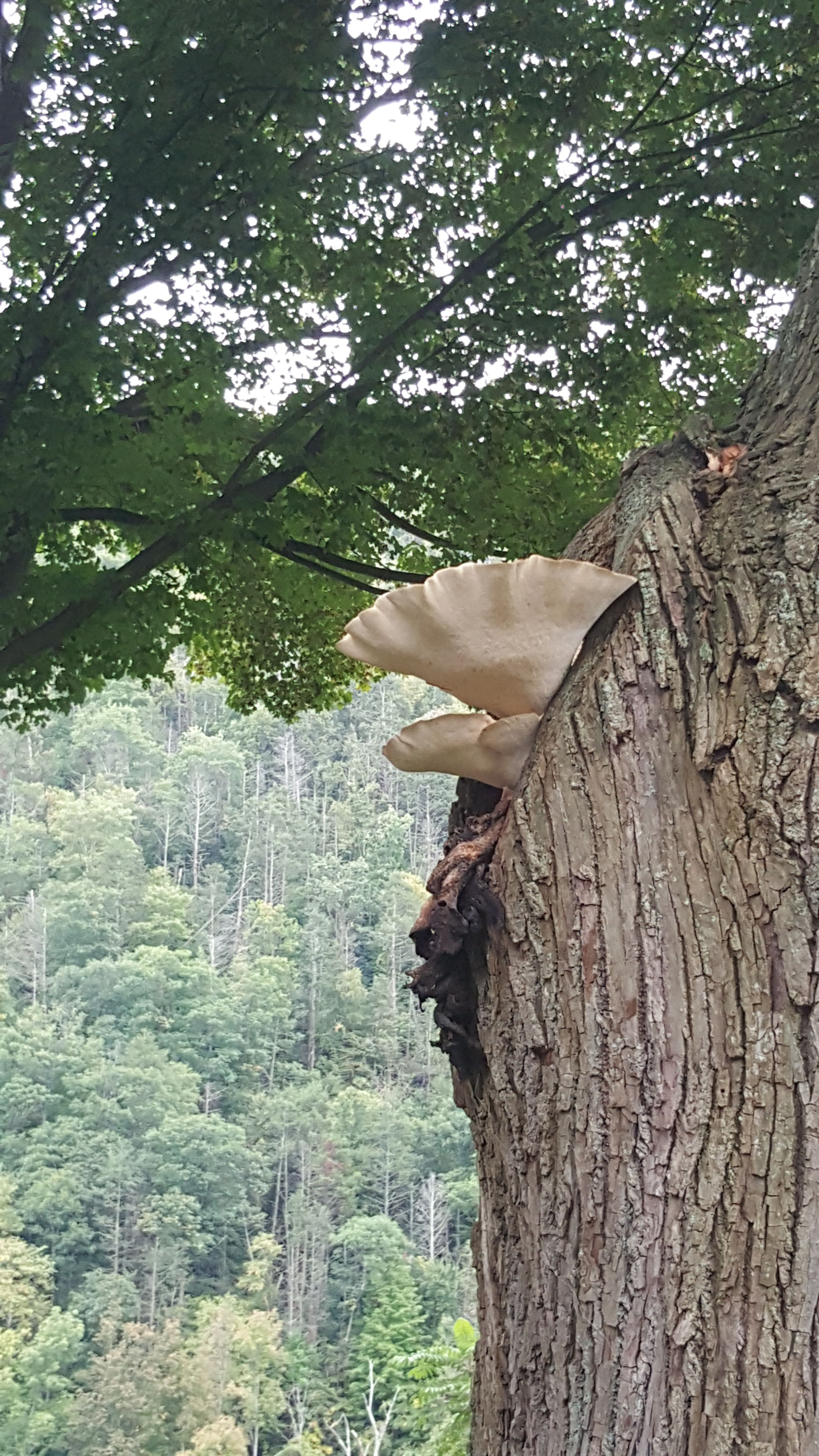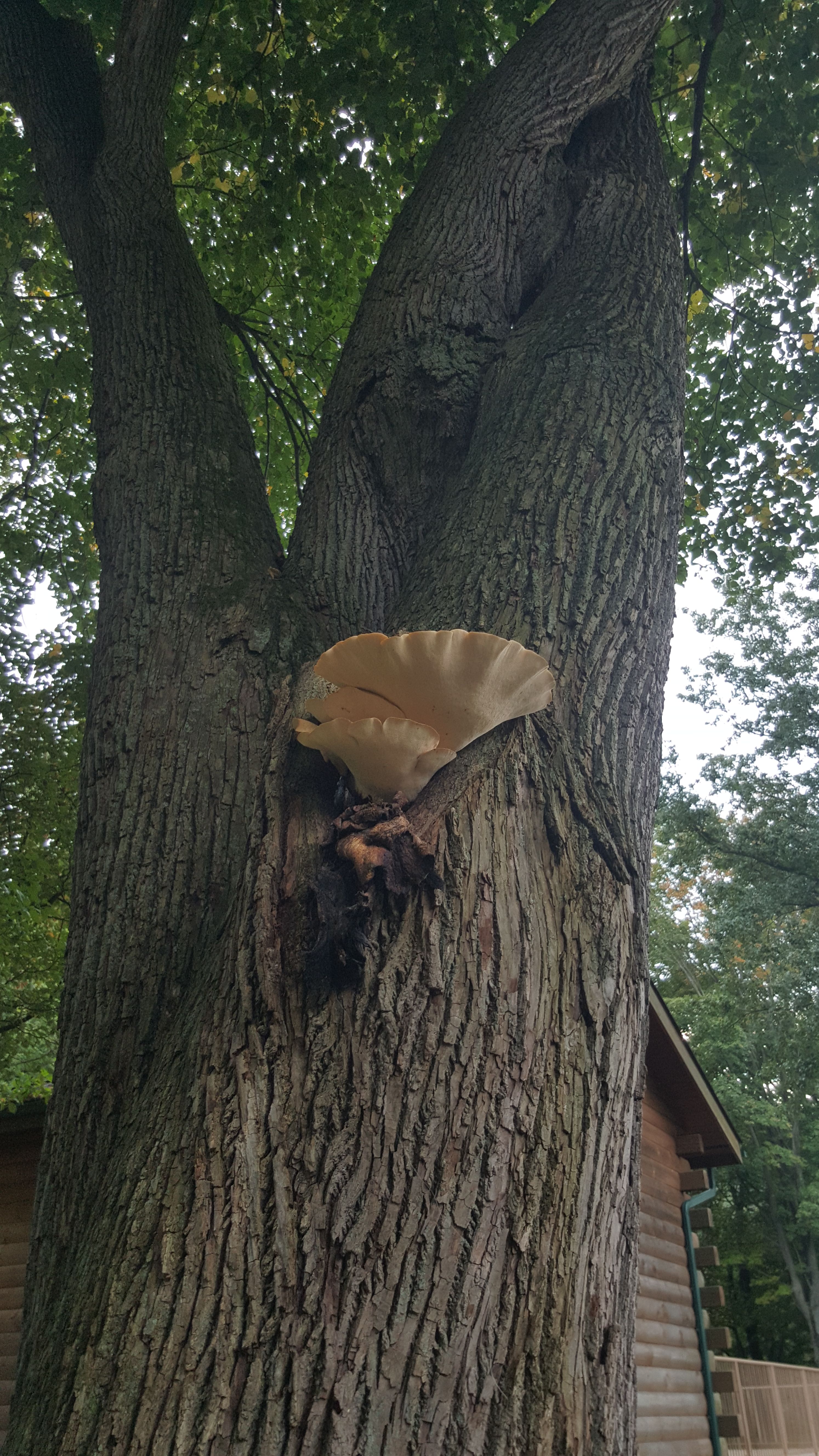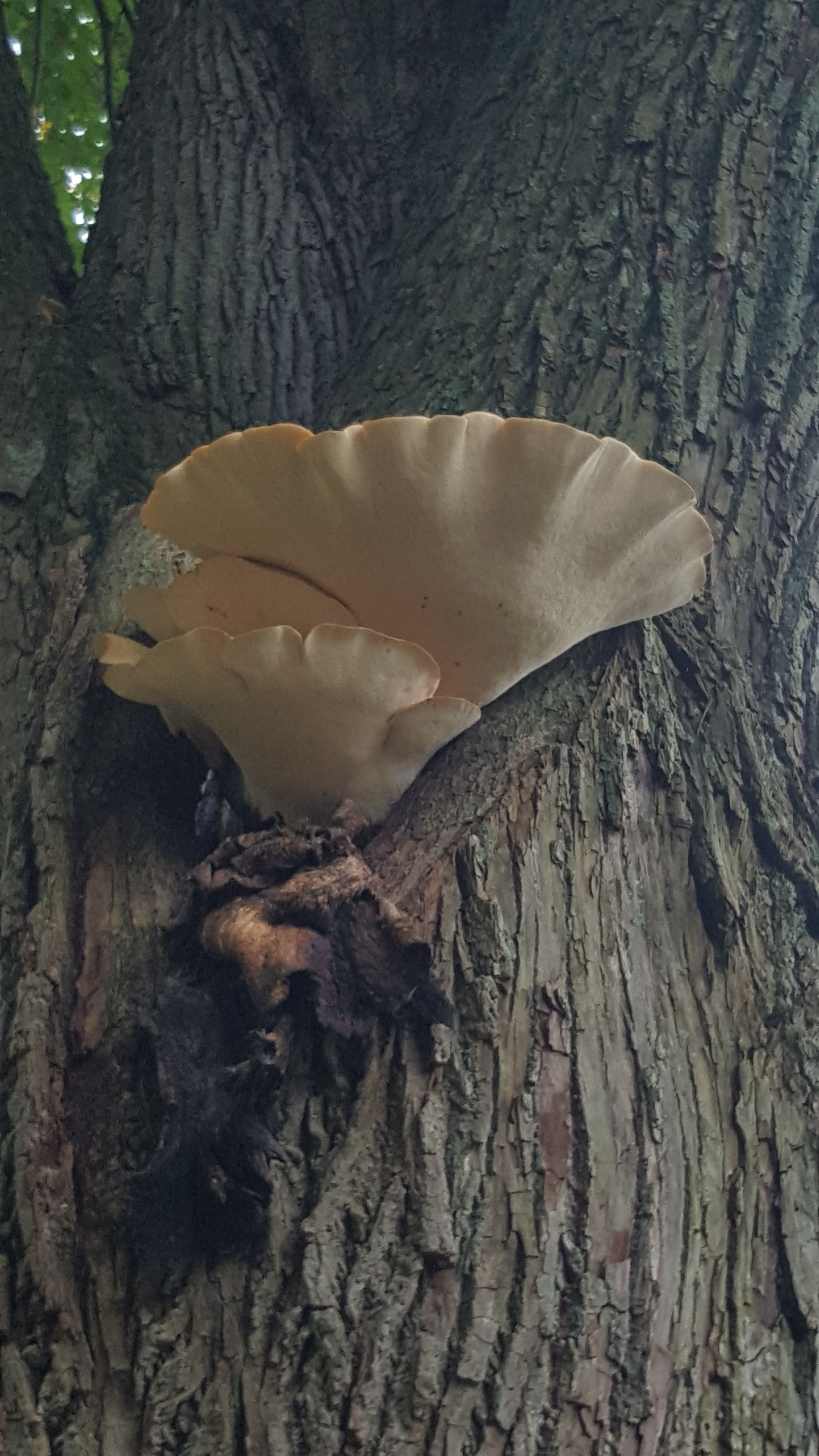Tree mushrooms...Beautiful but lethal
mushrooms·@unknown-one·
0.000 HBDTree mushrooms...Beautiful but lethal
Although they look beautiful and present themselves on the tree naturally, they are actually very lethal to the tree.    White Rot Bark Mushrooms Mushrooms that cause white rot break down the lignin in trees, leaving white cellulose behind. White rot mushrooms grow slowly, and the damage is typically limited, although sometimes it can kill a tree. The grayish-white split gill mushroom (Schizophyllum commune) causes white rot in more than 75 trees, including acacia, ash, birch, fir, laurel, locust, magnolia, oak oleander, pine, poplar, sequoia, spruce and willow. Artist’s conk (Gandododerma applanatum), a brown and white shelf mushroom, causes white rot on citrus trees and on landscape trees such as elm, fir, maple, poplar and pine.The varnish fungus (Gandoderma lucidum), a bright-red conk, can kill fruit and landscape trees in three to five years. Among susceptible trees are citrus, cherry, apple, peach, pine, poplar and willow. Source: http://homeguides.sfgate.com/mushrooms-grow-tree-bark-28272.html Here are some more photos of similar kind of mushroom https://steemit.com/mushrooms/@unknown-one/mushroom-tree-my-picture-day They are Brown Rot Bark Mushrooms Brown rot mushrooms cause wood to turn dry and crumbly — a condition commonly called dry rot. Brown rot mushrooms grow more quickly than white rot mushrooms and cause more damage. The familiar sulfur fungus (Laetiporus sulphureus) forms conks 2 to 12 inches wide that are soft, moist and fleshy when they are young, turning hard and brittle as they age. Young sulfur mushrooms are reddish-yellow on the bottom and orange-yellow on top, turning white as they mature. They infect a wide variety of trees, including acacia, ash, birch, cherry, chestnut, eucalyptus, fir, locust, maple, oak, pine, poplar, spruce, walnut and yew. The thick, reddish-brown beefsteak fungus (Fistulina hepatica) causes intensive brown rot in older chestnut, oak and other hardwood trees. The red banded polypore (Formitopsis pinicola) varies greatly in appearance, but usually has a red band at the bottom edge of the bract. It usually attacks coniferous trees. Source:http://homeguides.sfgate.com/mushrooms-grow-tree-bark-28272.html  As always , Thanks for stopping by!